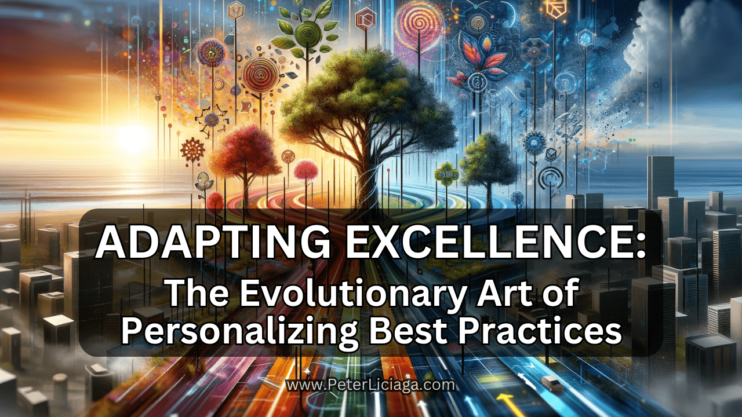Section 3: Personalization: Key to Leveraging Best Practices
In the pursuit of success, whether in professional or personal realms, the concept of ‘best practices’ often serves as a guiding compass. However, the true essence of leveraging these practices lies not in their blind application but in their thoughtful personalization. Success, after all, is an individual journey, uniquely shaped by each person’s talents, aspirations, and contexts.
Understanding Personal Strengths and Weaknesses
The first step in personalizing best practices is an introspective examination of one’s strengths and weaknesses. This self-awareness is crucial. It involves recognizing not only what one is good at but also understanding areas that require improvement or support. Tools like personality tests, feedback from peers and mentors, and self-reflection exercises can be invaluable in this process. For instance, a professional might find they excel in strategic thinking but need to develop better communication skills. Acknowledging this allows for a more targeted approach in selecting and adapting best practices that play to their strengths while addressing their weaknesses.
Aligning with Aspirations and Goals
Every individual has unique goals and aspirations, and best practices must align with these personal objectives. A practice considered ‘best’ in a general sense may not be the most effective or efficient route to an individual’s specific goal. For example, a best practice in entrepreneurship might emphasize rapid scaling, but for someone whose goal is to maintain a work-life balance while running a small business, this approach may not be ideal. Personalizing best practices means adapting them to one’s aspirations, ensuring that they serve not just the end goal but also the journey towards it.
Contextual Adaptation
The context in which one operates significantly influences how best practices should be adapted. Cultural, economic, technological, and industry-specific factors play a crucial role. For example, marketing strategies that work well in a tech-savvy, urban environment might not yield the same results in a rural setting with different cultural dynamics. Recognizing and adapting to these contextual nuances is key to personalizing best practices effectively.
Leveraging Unique Potential
Perhaps most importantly, personalizing best practices involves leveraging one’s unique potential – the combination of skills, experiences, and perspectives that one brings to the table. It’s about turning what makes you different into an advantage. This requires not just self-awareness but also creativity and courage to deviate from the norm when necessary. For instance, an individual’s background in a seemingly unrelated field can provide unique insights into a problem, leading to innovative solutions that standard best practices might not have achieved.
Continuous Adaptation and Growth
Finally, personalization of best practices is not a one-time activity but a continuous process. As individuals grow and evolve, so too should the practices they rely on. This requires a commitment to lifelong learning, openness to change, and a willingness to experiment and take calculated risks. In an ever-changing world, adaptability is key.
Conclusion
In conclusion, while best practices provide a valuable starting point, their true power is unleashed when they are tailored to an individual’s unique blend of strengths, weaknesses, aspirations, and contexts. This personalization is the bridge that turns a general guideline into a powerful tool for personal and professional growth, leading to a more fulfilling and successful journey.




